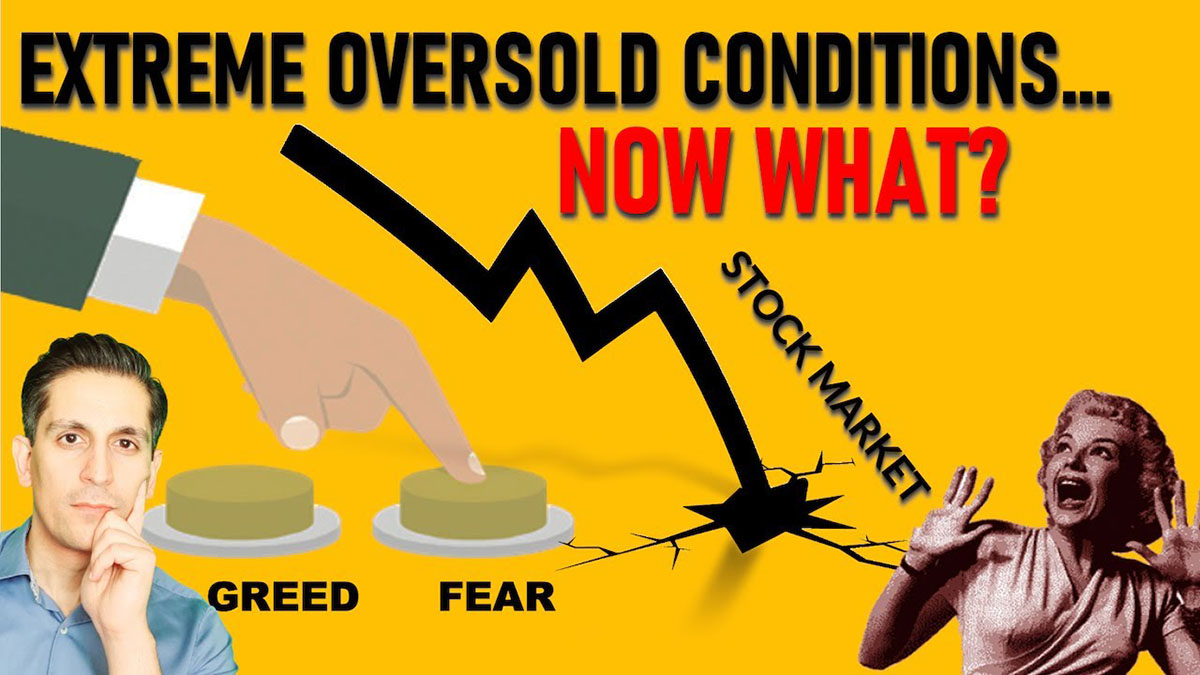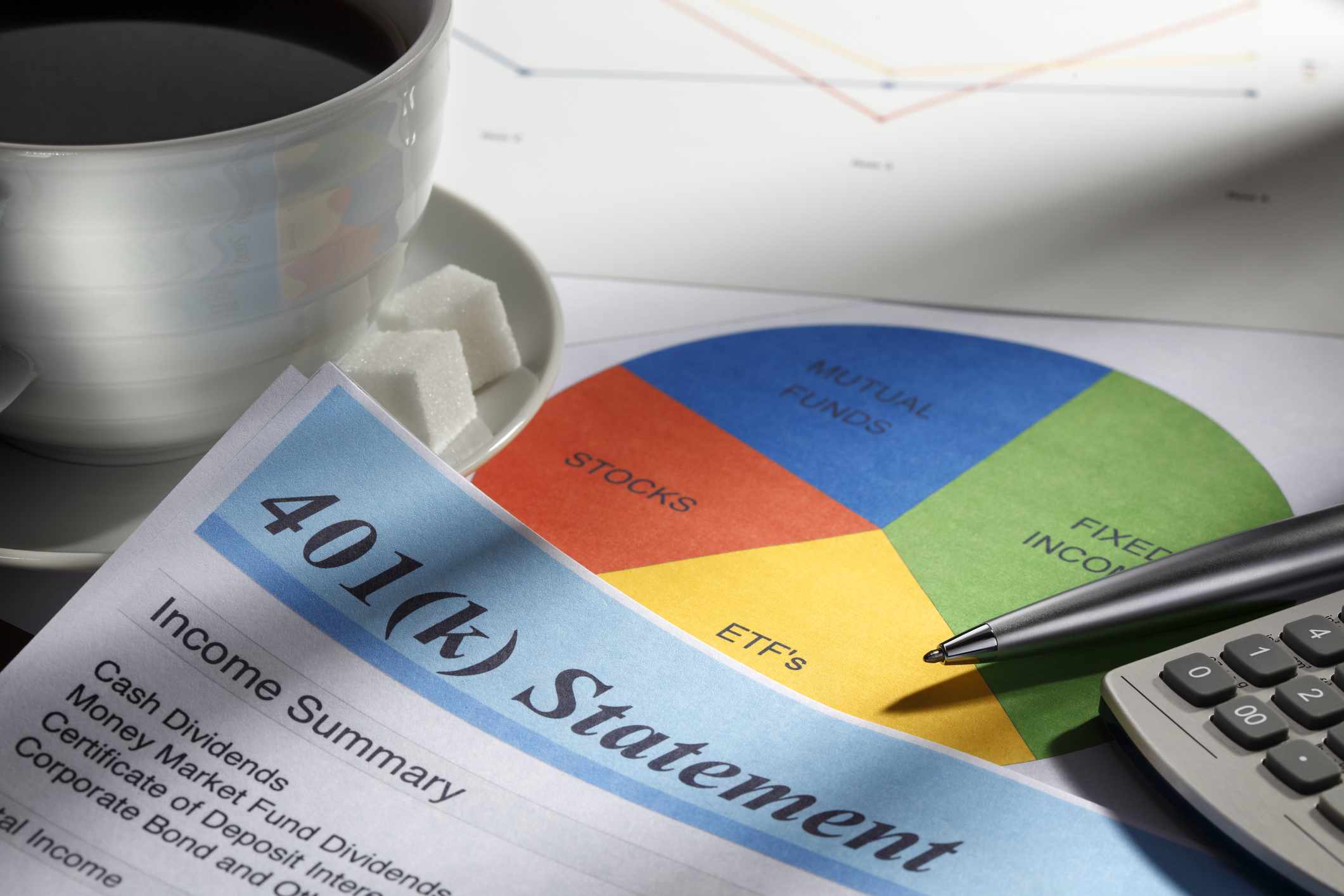

Finance
What Does Oversold Mean In The Stock Market
Published: October 20, 2023
Discover the meaning of "oversold" in the stock market and its significance in finance. Gain valuable insights into this key term and its implications.
(Many of the links in this article redirect to a specific reviewed product. Your purchase of these products through affiliate links helps to generate commission for LiveWell, at no extra cost. Learn more)
Table of Contents
Introduction
The stock market can be an unpredictable and volatile environment. Prices of stocks constantly fluctuate based on a variety of factors such as economic indicators, company performance, and market sentiment. Investors and traders are always on the lookout for opportunities to buy low and sell high, maximizing their potential profits. One such opportunity arises when a stock becomes oversold.
Oversold is a term used to describe a situation in which the price of a stock has fallen to an excessively low level, often accompanied by heightened selling pressure. It is a condition where market participants have pushed the stock price down to a point where it is considered undervalued and due for a potential rebound. This can present an attractive buying opportunity for those looking to capitalize on short-term price reversals.
When a stock is oversold, it means that it has experienced a significant decline in price within a relatively short period. This decline may not necessarily be reflective of the company’s actual financial health or prospects. Instead, it may be the result of temporary market factors or investor panic. As a result, oversold stocks may be trading at a discount compared to their intrinsic value, making them potentially attractive investments for savvy traders.
Definition of Oversold
In the stock market, the term “oversold” refers to a condition in which the price of a stock or an entire market has fallen sharply and is believed to be lower than its intrinsic value. It is a technical analysis concept that suggests the selling pressure on the stock has been excessive, leading to a potential buying opportunity.
To determine whether a stock is oversold, traders and investors look at various indicators and metrics. One popular indicator is the relative strength index (RSI), which measures the magnitude and speed of recent price changes. A low RSI reading, typically below 30, indicates that a stock may be oversold and due for a potential upward move.
Another indicator used to identify oversold conditions is the moving average convergence divergence (MACD). When the MACD line crosses below the signal line and both are below zero, it suggests bearish momentum and a possible oversold condition.
While oversold conditions may present an opportunity for traders to buy stocks at discounted prices, it is important to note that stock prices could continue to decline further before rebounding. Therefore, it is essential to conduct thorough research and analysis before making any investment decisions based on oversold signals.
It’s also worth mentioning that oversold conditions can occur not only for individual stocks but also for entire market indices or sectors. Market-wide sell-offs or negative news affecting a specific sector can lead to indiscriminate selling, pushing prices to artificially low levels. This can create opportunities for investors who are able to identify potential bottoming patterns and take advantage of the market’s tendency to eventually correct itself.
Indicators of Oversold Stocks
Identifying oversold stocks requires the use of various indicators and technical analysis tools. These indicators help traders and investors gauge the selling pressure and determine if a stock has reached a point where it may be undervalued and due for a potential rebound. Here are some commonly used indicators to identify oversold stocks:
- Relative Strength Index (RSI): The RSI is a popular momentum indicator that measures the speed and change of price movements. A stock is considered oversold when the RSI reading falls below 30. The lower the RSI, the greater the potential for a price reversal.
- Stochastic Oscillator: The stochastic oscillator also measures momentum, but it compares a stock’s closing price to its price range over a specific period. When the stochastic oscillator falls below 20, it suggests that the stock is oversold and could be due for a bounce.
- Volume: Monitoring trading volume can provide insights into the intensity of market activity. A sharp increase in selling volume can indicate oversold conditions, as it suggests a surge in selling pressure that may be temporary.
- Bollinger Bands: Bollinger Bands consist of a moving average line and two standard deviation lines above and below it. When a stock’s price moves below the lower Bollinger Band, it suggests that the stock is oversold and could potentially rebound back towards the average.
- MACD: The Moving Average Convergence Divergence (MACD) is a trend-following momentum oscillator. A crossover of the MACD line below the signal line can signal an oversold condition.
It’s important to note that these indicators should not be used in isolation but rather in combination with other technical and fundamental analysis tools. They are just tools to aid in decision-making and should be used alongside comprehensive research and analysis of a stock’s financials, industry trends, and market conditions.
Furthermore, it’s crucial to remember that no indicator can guarantee the future performance of a stock. The markets are complex and influenced by numerous factors, including investor sentiment and macroeconomic events. Therefore, it’s essential to exercise caution and employ risk management strategies when trading oversold stocks.
Impact of Oversold Conditions on the Stock Market
Oversold conditions in the stock market can have significant implications for both individual stocks and the broader market. Here are some key impacts of oversold conditions:
- Buying Opportunities: Oversold conditions often present attractive buying opportunities for investors. When a stock is oversold, its price is perceived to be lower than its intrinsic value, making it potentially undervalued. This can attract value investors who see the opportunity to purchase stocks at a discount and potentially profit from a price rebound.
- Price Reversals: Oversold conditions may signal that the selling pressure in a stock has reached a temporary extreme. As a result, there is a higher probability of a price reversal in the near future. Traders and investors may look for signs of a potential turnaround, such as bullish candlestick patterns or positive divergence between price and technical indicators, to take advantage of the expected rebound.
- Market Sentiment: Oversold conditions can impact market sentiment. When stocks experience significant declines and become oversold, it may create fear and panic among investors. This negative sentiment can lead to further selling and exacerbate the downward pressure on stock prices. However, once oversold conditions are recognized, there is often a shift in sentiment as investors spot the potential buying opportunities, potentially leading to a market-wide rebound.
- Volatile Trading: Oversold conditions can lead to increased volatility in the stock market. As traders and investors attempt to capitalize on potential price reversals, there may be heightened buying and selling activity. This increased volatility can present both opportunities and risks, as prices may swing dramatically in short periods, making it crucial to carefully manage positions and utilize risk management strategies.
- Market Corrections: Oversold conditions can also be indicators of broader market corrections or downturns. If many stocks or an entire market index become oversold, it may suggest a bearish market trend. This can be driven by factors such as economic indicators, geopolitical events, or industry-specific challenges. Traders and investors should be cautious during such periods and consider implementing defensive strategies to protect their portfolio.
Understanding the impact of oversold conditions on the stock market is essential for traders and investors to make informed decisions. By recognizing potential buying opportunities, evaluating market sentiment, and managing risk, individuals can navigate oversold conditions and potentially capitalize on price reversals.
Strategies for Trading Oversold Stocks
Trading oversold stocks can be a lucrative strategy for investors looking to capitalize on potential price reversals. Here are some effective strategies to consider when trading oversold stocks:
- Wait for Confirmation: Instead of trying to catch a falling knife, it is prudent to wait for confirmation of a price reversal before entering a trade. Look for signals such as bullish candlestick patterns, positive divergence in technical indicators, or a break above a key resistance level. This can help validate that the oversold condition is likely to lead to a bounce in price.
- Set Clear Entry and Exit Points: Define your entry and exit points based on your risk tolerance and profit objectives. Determine the price level at which you want to enter the trade and set a stop-loss order to limit potential losses. Similarly, establish a target price or a trailing stop to secure your profits and exit the trade when the stock price reaches your desired level.
- Use Technical Analysis: Incorporate technical analysis tools and indicators to support your trading decisions. Look for oversold conditions based on indicators like RSI, stochastic oscillator, or Bollinger Bands. Additionally, consider using moving averages, trendlines, or Fibonacci retracement levels to identify potential support or resistance areas that can further validate your entry and exit points.
- Consider Fundamental Analysis: While technical analysis plays a significant role in trading oversold stocks, it’s important not to overlook the fundamentals. Conduct thorough research on the company’s financial health, earnings growth potential, and industry trends. Look for catalysts that could drive the stock’s price higher and increase the likelihood of a successful trade.
- Manage Risk: Implement proper risk management techniques to protect your capital. Position sizing is crucial; never risk more than a certain percentage of your trading account on a single trade. Additionally, use stop-loss orders to limit potential losses in case the trade does not go as planned. Continuously re-evaluate and adjust your risk management strategy as the trade progresses.
It’s important to note that trading oversold stocks carries risks, as prices can continue to decline despite indications of oversold conditions. Therefore, it is vital to combine technical and fundamental analysis, exercise discipline in trade execution, and adhere to proper risk management principles. It is also helpful to stay informed of market news and trends that can influence stock prices.
Risks and Challenges in Oversold Trading
While trading oversold stocks can be potentially profitable, it is important to recognize and manage the risks and challenges associated with this strategy. Here are some key risks and challenges to be aware of when trading oversold stocks:
- Continued Price Decline: Just because a stock is oversold does not guarantee an immediate price rebound. It is possible that the selling pressure continues, pushing the stock price even lower. Traders should be prepared for the possibility of extended downward trends and avoid getting caught in a falling market.
- False Signals: Oversold conditions can generate false signals, leading to poor trading decisions. Sometimes, a stock may remain oversold for an extended period or even go through a further decline before bouncing back. Traders need to differentiate between true oversold conditions and temporary fluctuations to avoid being misled by false signals.
- Limited Liquidity: Some oversold stocks may have limited trading volume, resulting in lower liquidity. This can make it difficult to enter and exit positions at desired prices. Traders should consider the liquidity of a stock before committing capital to ensure they can execute their trades effectively.
- Market Uncertainty: Oversold trading can be challenging during periods of market uncertainty or heightened volatility. In turbulent times, market sentiment and investor behavior can be unpredictable, making it harder to gauge a stock’s potential for a rebound. It is crucial to stay updated on market news, economic indicators, and global events that may impact stock prices.
- Psychological Factors: Oversold trading can evoke strong emotions, such as fear and anxiety, as traders navigate volatile markets. Emotion-driven decision-making can lead to impulsive trades, deviating from the initial trading plan. Maintaining discipline, managing emotions, and sticking to a well-thought-out strategy are essential to success in oversold trading.
Understanding the risks and challenges in oversold trading is vital for traders to mitigate potential losses and improve their overall effectiveness. It requires careful analysis, continuous monitoring of market conditions, and disciplined execution. Developing a robust risk management strategy and maintaining a prudent approach to trading can help navigate the challenges associated with oversold trading and increase the chances of successful outcomes.
Conclusion
Trading oversold stocks can be a rewarding strategy for investors seeking short-term price reversals and potential profits. By identifying stocks that have become oversold, traders have the opportunity to buy stocks at a discount and potentially capitalize on the subsequent rebound in prices.
However, it is crucial to approach oversold trading with caution and employ proper risk management techniques. While oversold conditions can indicate potential buying opportunities, there are risks and challenges involved. Stocks can continue to decline, false signals can mislead traders, and market uncertainty can create additional hurdles.
To effectively trade oversold stocks, it is essential to utilize a combination of technical and fundamental analysis. By considering indicators such as the RSI, stochastic oscillator, and volume, traders can gain insights into the selling pressure and potential for a price reversal. Incorporating fundamental analysis, including evaluating the company’s financial health and industry trends, provides a comprehensive perspective.
Successful oversold trading also requires proper risk management. Setting clear entry and exit points, implementing stop-loss orders, and managing position sizing can help limit losses and protect trading capital. Additionally, traders must remain disciplined, control emotions, and adhere to their trading plan even when faced with volatile market conditions.
In conclusion, oversold trading presents opportunities for traders to profit from potential price reversals. By employing thorough analysis, risk management, and discipline, traders can navigate the risks and challenges associated with oversold conditions and potentially achieve successful outcomes. Remember, continuous learning, adaptation, and keeping up with market trends are essential for maximizing the potential of oversold trading strategies.














